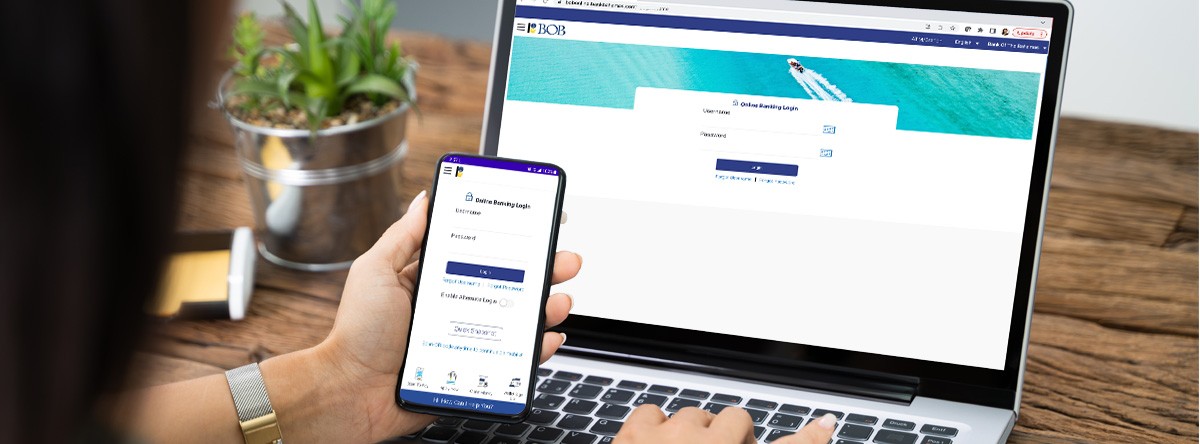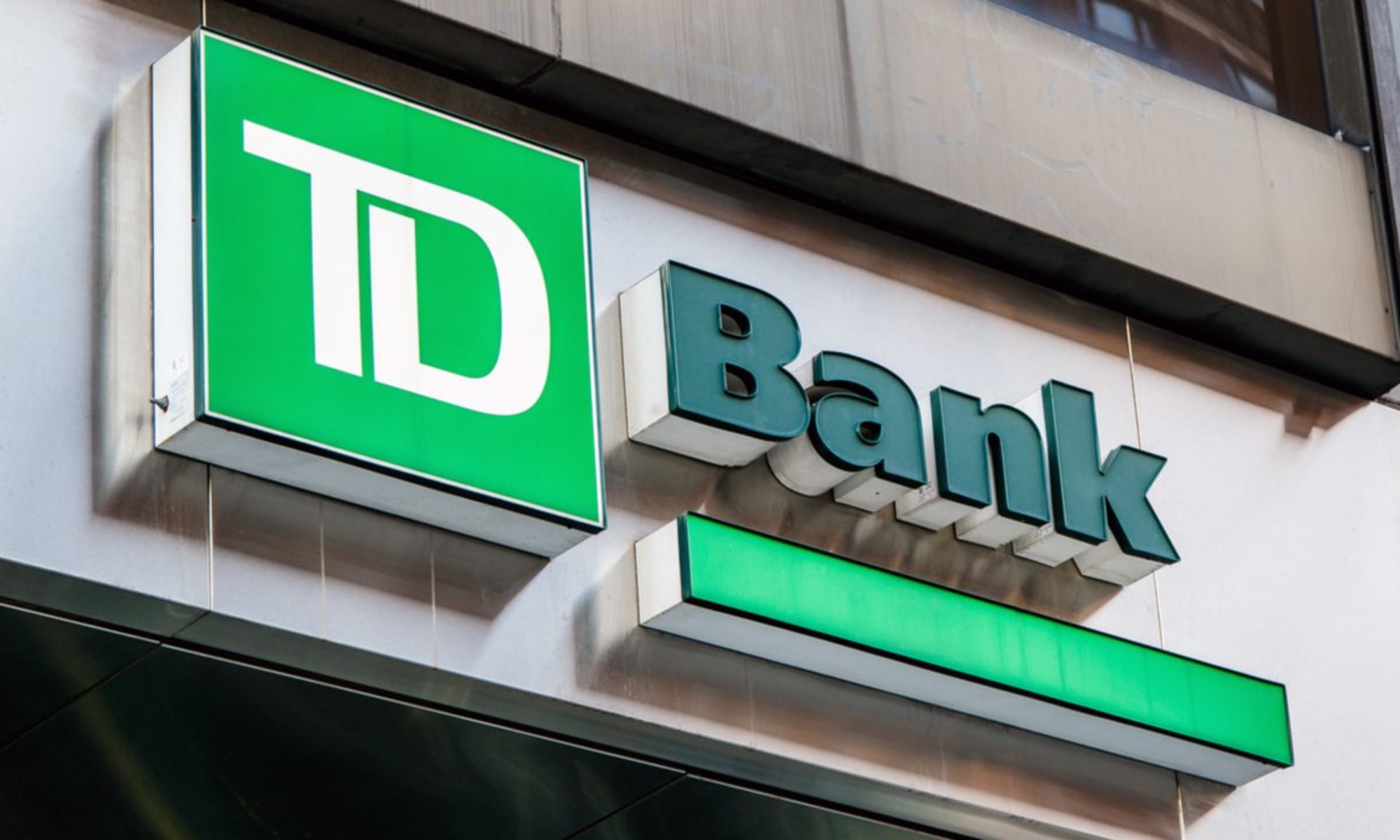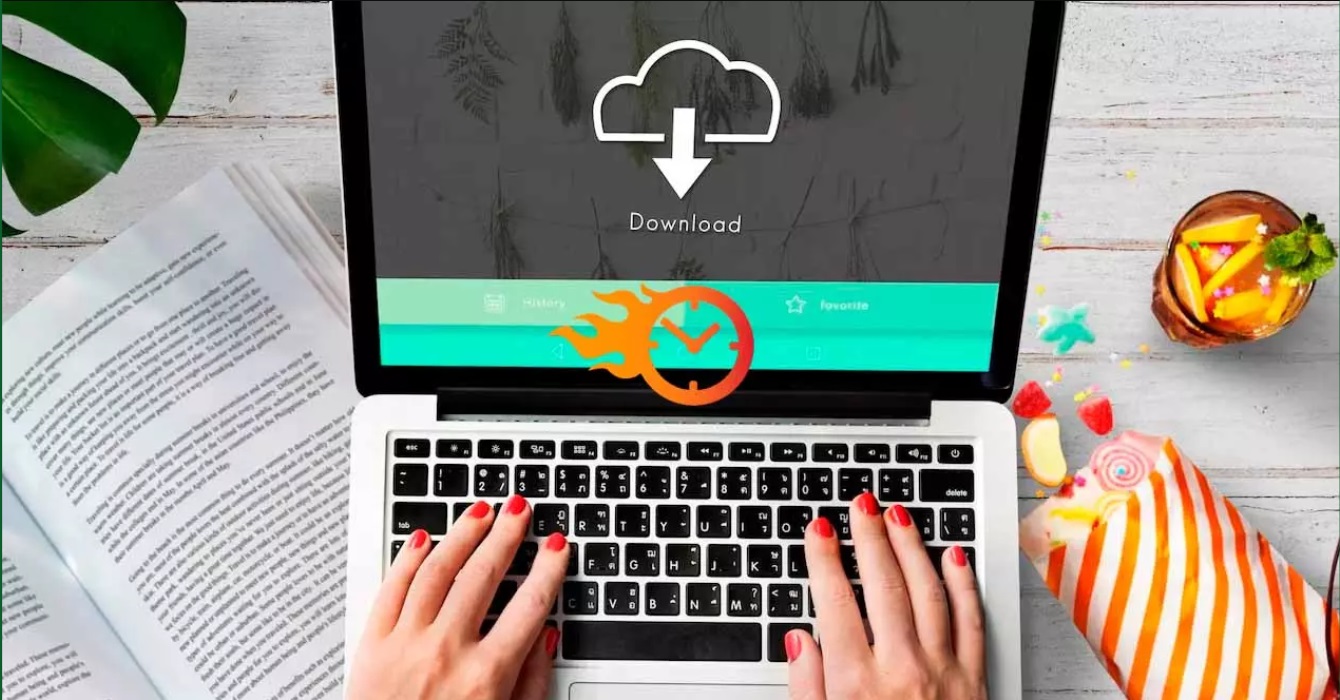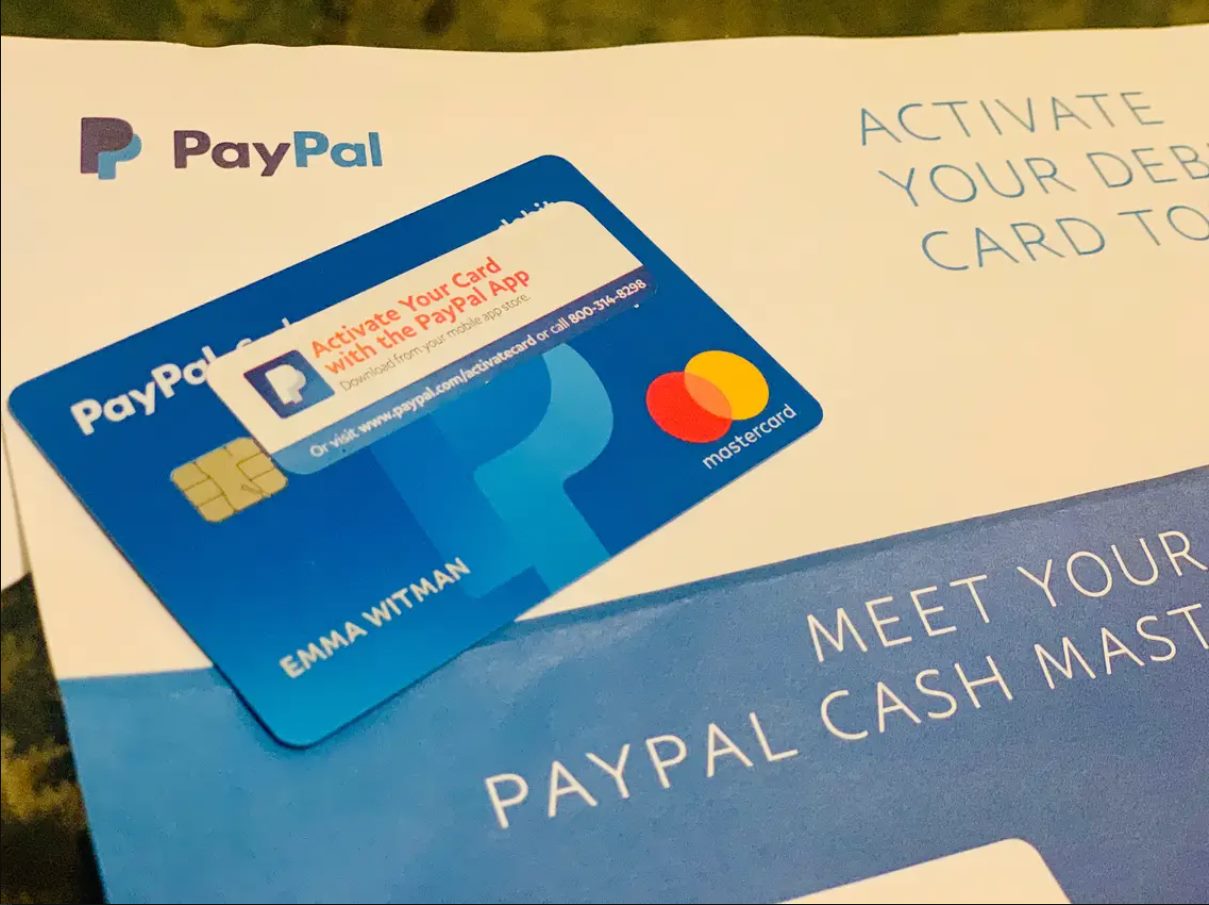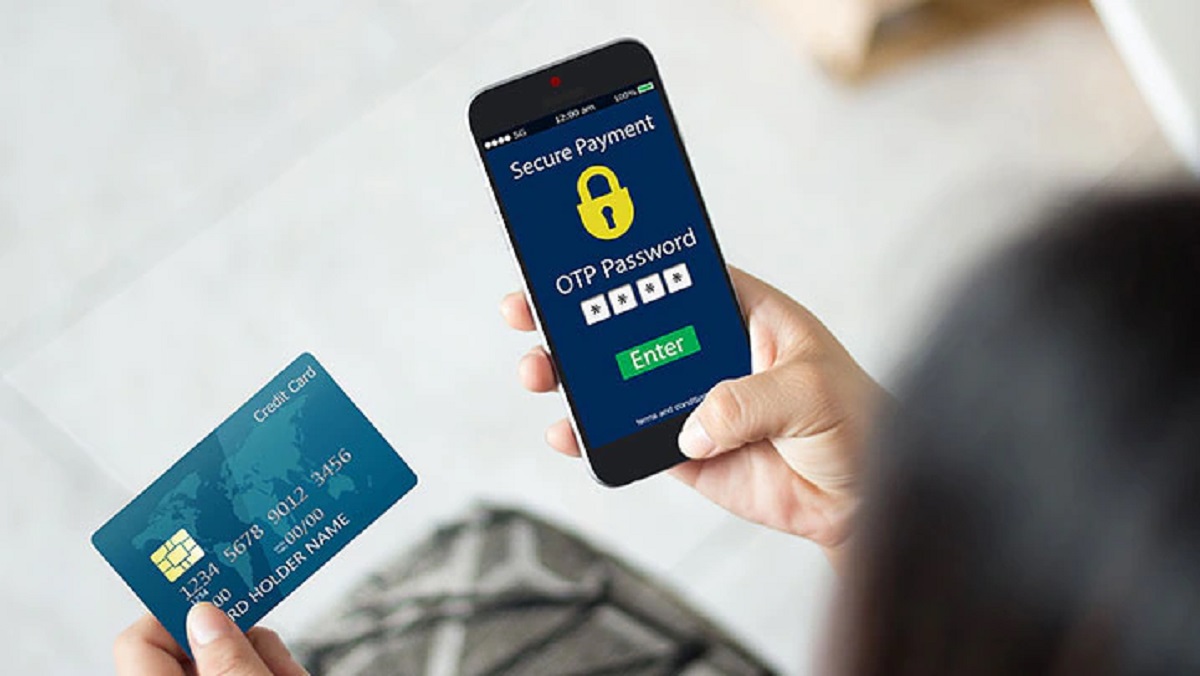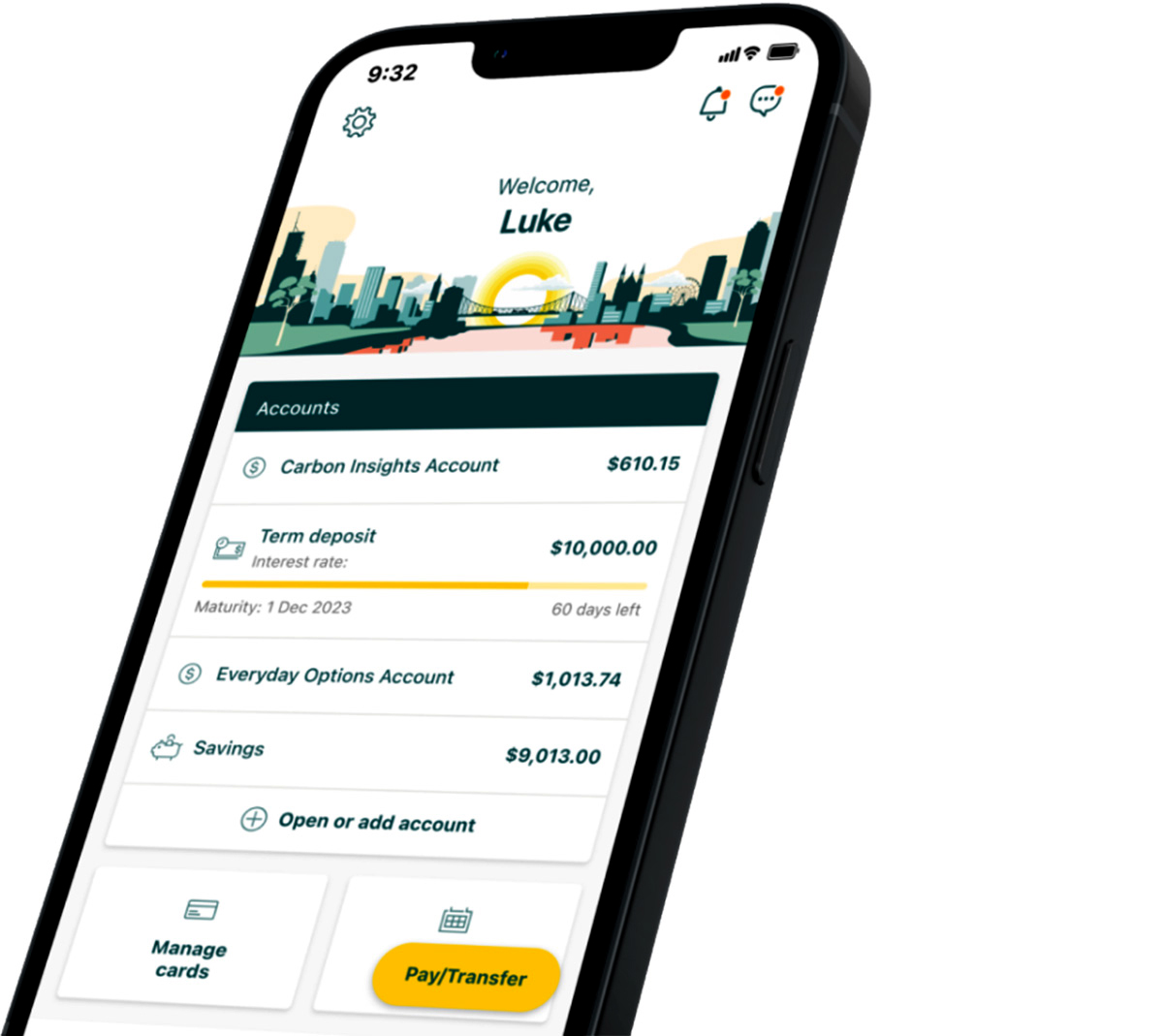Introduction
Online banking has revolutionized the way we manage our finances, offering convenience, accessibility, and an array of banking services at our fingertips. Gone are the days of standing in line at the bank or waiting for monthly paper statements to arrive in the mail. With just a few clicks, you can now access your accounts, transfer funds, pay bills, and even apply for loans from the comfort of your own home.
In this article, we will guide you through the process of registering for online banking, step by step. Whether you’re a seasoned internet user or just starting out, we’ve got you covered. Before we dive into the registration process, let’s take a moment to explore the benefits of online banking and how to choose the right bank for your needs.
Benefits of Online Banking
Online banking offers numerous advantages that make it worth considering. Firstly, it provides unparalleled convenience. With 24/7 access to your accounts, you no longer have to adhere to traditional banking hours. Whether it’s early morning or late at night, you can check your balance, review transactions, and manage your finances whenever it suits you.
Secondly, online banking eliminates the need for paper statements and physical documents. By going digital, you not only reduce clutter but also contribute to a more sustainable environment.
Moreover, online banking provides a comprehensive overview of your financial situation. With just a few clicks, you can track your spending patterns, categorize expenses, and set budgeting goals. This level of financial visibility empowers you to make informed decisions and take control of your financial future.
Lastly, online banking comes with advanced security measures that protect your personal and financial information. From encrypted connections to two-factor authentication, banks prioritize the safety of their customers’ data.
Now that you’re aware of the benefits of online banking, the next step is to find the right bank that offers this service. Let’s explore how to choose the perfect bank for your online banking needs in the next section.
Benefits of Online Banking
Online banking offers numerous advantages that make it a convenient and efficient way to manage your finances. Whether you’re new to online banking or a seasoned user, here are some key benefits to consider:
- Convenience: Online banking provides 24/7 access to your accounts, allowing you to check balances, view transactions, and transfer funds at any time and from anywhere. Say goodbye to waiting in long lines at the bank or rushing to make it before closing time.
- Accessibility: With online banking, you can manage your finances from the comfort of your own home, office, or on the go. As long as you have an internet connection, you can securely access your accounts and perform banking transactions.
- Time-saving: Online banking eliminates the need for manual tasks like filling out deposit slips or writing checks. You can set up recurring payments, schedule transfers, and even apply for loans or credit cards online, saving you valuable time.
- Cost-effective: Many banks offer online banking services for free or at a minimal cost compared to traditional banking. You can avoid fees associated with paper statements, check printing, or in-person transactions.
- Financial management: Online banking provides a holistic view of your financial situation. You can track your expenses, categorize transactions, and set budgeting goals using built-in tools or third-party budgeting apps. This level of financial visibility helps you make informed decisions and stay on top of your finances.
- Speed and efficiency: Online banking enables quick and efficient transactions. You can transfer funds between accounts instantly, pay bills with a few clicks, and receive real-time notifications for account activity, ensuring that you stay up to date with your financial transactions.
- Security: Banks utilize advanced security measures to protect your personal and financial information. Encryption technologies, secure login procedures, and multi-factor authentication help safeguard your accounts from unauthorized access.
- Environmental impact: By opting for online banking, you can reduce your carbon footprint. Going paperless means fewer paper statements, checks, and envelopes, which translates to less waste and a more sustainable future.
With these benefits in mind, it’s clear that online banking offers convenience, flexibility, and peace of mind when it comes to managing your finances. Now let’s explore how to choose the right bank for your online banking needs.
Choosing a Bank for Online Banking
When it comes to choosing a bank for your online banking needs, it’s important to consider a few key factors to ensure that you find the right fit. Here are some things to keep in mind:
- Reputation and Trustworthiness: Look for a bank with a solid reputation and a history of financial stability. Research customer reviews and ratings to gauge the bank’s level of customer satisfaction and trustworthiness.
- Online Banking Features: Evaluate the features and capabilities offered by the bank’s online banking platform. Is it user-friendly? Does it offer a mobile app for convenient access on your smartphone or tablet? Consider your specific needs and preferences when it comes to online banking features.
- Network and Accessibility: Consider the bank’s network of ATMs and branches. If you prefer having access to in-person banking services, choose a bank with a wide network of physical locations. Alternatively, if you primarily rely on digital banking, ensure that the bank offers a robust online and mobile banking experience.
- Fees and Charges: Review the bank’s fee structure for online banking services. Some banks may charge monthly maintenance fees, transaction fees, or ATM withdrawal fees. Compare the fees of different banks to find the most cost-effective option.
- Customer Support: Check the availability and responsiveness of the bank’s customer support. Look for multiple channels of support such as phone, email, and online chat, and ensure that the bank provides timely and helpful assistance when needed.
- Security Measures: Verify that the bank has robust security measures in place to protect your sensitive data. Encryption protocols, secure login procedures, and fraud prevention tools are essential features to look for when choosing an online banking provider.
- Add-On Services: Consider additional services that the bank offers, such as mobile check deposit, person-to-person payments, or investment options. These added features can enhance your online banking experience and provide greater convenience.
- Integration with Other Accounts: If you have accounts with other financial institutions, check if the bank’s online banking platform allows you to link and manage those accounts as well. This can streamline your financial management and provide a comprehensive overview of your finances.
By carefully considering these factors, you can find a bank that meets your specific requirements for online banking. Once you’ve identified the ideal bank, it’s time to gather the necessary information before proceeding with the registration process. In the next section, we will discuss the important details you need to gather before registering for online banking.
Gathering Required Information
Before you begin the online banking registration process, it’s important to gather all the necessary information to ensure a smooth and efficient setup. The specific requirements may vary depending on the bank, but here are some common pieces of information you may need:
- Personal Information: You will likely need to provide basic personal details such as your full name, date of birth, social security or national identification number, and contact information including address, phone number, and email address.
- Account Information: You will need the account number for the account(s) you wish to link to your online banking profile. This may include your savings, checking, or credit card accounts.
- Identification Documents: Depending on your jurisdiction, you may be required to provide a scanned copy or a photo of your identification document, such as a driver’s license, passport, or national ID card. This is to verify your identity and ensure the security of your online banking profile.
- Security Questions/Answers: To add an extra layer of security to your online banking account, you may need to set up security questions and provide answers that only you would know. These questions can be used later to verify your identity if needed.
- Existing Online Banking Credentials (if applicable): If you are switching from another online banking provider, some banks may require you to provide your current online banking username, password, or other login credentials in order to transfer your accounts and settings.
- Preferred Login Credentials: You will likely need to choose a username and password for your online banking account. It’s crucial to select strong and unique credentials to protect your account from unauthorized access.
Before you proceed with the registration process, check with your chosen bank to ensure that you have all the required information and documents. This will help streamline the registration process and prevent any unnecessary delays or complications. Now that you have gathered the necessary information, let’s move on to the step-by-step instructions for registering for online banking in the next section.
Step-by-Step Instructions for Registering
Registering for online banking is a straightforward process that can usually be completed in just a few steps. Follow these step-by-step instructions to get started:
- Visit the Bank’s Website: Open a web browser and navigate to the official website of the bank where you want to register for online banking. Make sure you are on the secure and official site to protect your personal information.
- Locate the Online Banking Login/Register Button: Look for the “Online Banking” or “Login/Register” button on the bank’s homepage. It is typically located at the top-right corner or in the main navigation menu.
- Click on Register or Sign Up: Once you find the appropriate button, click on it to start the registration process. You may be redirected to a new page or prompted to enter your account or personal details.
- Enter Your Personal Information: Fill in the required personal information such as your full name, date of birth, social security number, and contact details. Make sure to double-check the accuracy of the information before proceeding.
- Provide Your Account Information: Enter the account number(s) for the accounts you wish to link to your online banking profile. This may include savings, checking, or credit card accounts. Ensure that you input the correct account numbers to avoid any issues later on.
- Choose Your Login Credentials: Select a unique username and password for your online banking account. Make sure your password is strong and includes a combination of uppercase and lowercase letters, numbers, and special characters. Avoid using easily guessable information like your birthdate or phone number.
- Set Up Security Measures: Some banks may require you to set up additional security measures such as security questions, a security image, or a security code sent to your phone. Follow the instructions provided and choose options that you are comfortable with.
- Review and Accept Terms and Conditions: Take the time to carefully read and review the terms and conditions of the online banking service. If you agree to the terms, click on the checkbox or button to indicate your acceptance.
- Verify Your Identity: Depending on the bank’s verification procedures, you may need to verify your identity. This could involve answering personal questions, providing codes sent to your phone, or uploading identification documents. Follow the bank’s instructions to complete the verification process.
- Confirm and Complete Registration: After verifying your identity, you may receive a confirmation message or email indicating the successful completion of your registration. Take note of any important information or instructions provided.
Once you have completed these steps, you are now registered for online banking! You can proceed to log in to your online banking account and start exploring the various features and services available to you. In the next section, we will discuss the importance of setting up security measures for your online banking account.
Verifying Your Identity
Verifying your identity is an important step in the online banking registration process. Banks have stringent security measures in place to ensure that only authorized individuals gain access to sensitive financial information. Here are the typical methods for verifying your identity:
- Security Questions: During the registration process, you may be prompted to set up security questions and provide answers that only you would know. These questions act as an additional layer of security and help verify your identity if you need to reset your password or perform certain actions.
- Identity Documents: Some banks require you to provide scanned copies or photos of official identification documents, such as a driver’s license, passport, or national ID card. This verification method confirms that you are the rightful owner of the account and adds an extra level of security.
- Two-Factor Authentication (2FA): Two-factor authentication is a widely used security measure that adds an extra layer of protection to your online banking account. It typically involves receiving a code via text message, email, or through a dedicated authentication app on your smartphone. This code is then entered during the login process to verify your identity.
- Confirmation Phone Call: In some cases, a representative from the bank may call you to confirm your identity. They may ask you personal questions or request specific information related to your account in order to verify that you are the account holder.
- Location Confirmation: Banks may track the location from which you are accessing your online banking account. If you log in from an unusual location or device, the bank may require additional verification steps to ensure the security of your account.
It’s important to follow the instructions provided by the bank during the identity verification process. Make sure to provide accurate information and submit any required documents promptly and securely. This verification process helps protect your personal and financial information, as well as safeguard against identity theft and fraudulent activities.
Once your identity has been successfully verified, you can proceed with setting up security measures within your online banking account. In the next section, we will explore the various security measures you can implement to enhance the safety of your online banking experience.
Setting Up Security Measures
Securing your online banking account is crucial to protect your personal and financial information from unauthorized access. Here are some key security measures you should consider implementing:
- Strong Password: Choose a unique and complex password for your online banking account. Avoid using easy-to-guess information such as your name, birthdate, or sequential numbers. Include a combination of uppercase and lowercase letters, numbers, and special characters to make it more secure.
- Two-Factor Authentication (2FA): Enable two-factor authentication if your bank offers it. This adds an extra layer of security by requiring an additional verification step, such as a code sent to your registered mobile device or email, when logging into your account.
- Regularly Update Your Password: Change your online banking password periodically to reduce the risk of unauthorized access. Aim to update your password every three to six months, or whenever you suspect a security breach.
- Monitor Account Activity: Regularly review your account activity and transaction history. If you notice any unfamiliar or suspicious transactions, report them to your bank immediately to address any potential security issues.
- Secure Internet Connection: Ensure that you are accessing your online banking account from a secure and trusted internet connection. Avoid using public Wi-Fi networks, as they can be vulnerable to hackers. Instead, use a private, password-protected network or a trusted cellular data connection.
- Avoid Phishing Scams: Be cautious of emails, messages, or phone calls asking for your login credentials or personal information. Legitimate banks will never ask for such information through insecure channels. Always verify the source and legitimacy of any requests before providing any sensitive information.
- Keep Your Devices Secure: Ensure that the devices you use to access your online banking account are protected with up-to-date antivirus software and security patches. Use strong passwords to lock your devices and enable device encryption if available.
- Secure Online Behavior: Practice safe online behavior by being cautious of suspicious websites, avoiding downloading files from unknown sources, and not clicking on suspicious links or email attachments. Stay informed about common online scams and phishing techniques in order to protect yourself.
- Logout Properly: Always log out of your online banking account when you finish your banking activities. Avoid leaving your account open and unattended on shared or public devices.
- Regularly Update Security Software: Keep all security software, including antivirus, anti-malware, and firewall programs, up to date. Regularly install software updates and patches as they often include necessary security enhancements.
By implementing these security measures, you can significantly enhance the safety and protection of your online banking account. It’s important to remain vigilant and proactive in maintaining the security of your account to prevent unauthorized access and potential financial loss.
Now that you have set up the necessary security measures, you are ready to log in to your online banking account. In the next section, we will explore the process of logging in and navigating your online banking portal.
Logging In to Your Online Banking Account
Once you have completed the registration process and set up your security measures, logging in to your online banking account is a simple process. Here are the steps to follow:
- Visit the Bank’s Website: Open your web browser and navigate to the official website of the bank where you registered for online banking.
- Locate the Online Banking Login Button: Look for the “Login” or “Sign In” button on the bank’s homepage. It is typically prominently displayed, either at the top-right corner or within the main navigation menu.
- Enter Your Username or Customer ID: On the login page, enter the username or customer ID that you selected during the registration process. This is the unique identifier that the bank provided to you.
- Enter Your Password: Next, enter your password. Remember to input the correct characters in the right case (uppercase or lowercase) as passwords are case-sensitive.
- Complete Two-Factor Authentication (if applicable): If you enabled two-factor authentication during the registration process, you will be prompted to enter the code sent to your registered mobile device or email address. Follow the instructions provided to complete the authentication process.
- Click “Login” or “Sign In”: Once you have entered the necessary information and completed any additional authentication steps, click the “Login” or “Sign In” button to access your online banking account.
- Review Account Summary: After logging in, you will typically be directed to your account summary page. Here, you can view an overview of your account balances, recent transactions, and other relevant information.
It is important to keep your login credentials confidential and avoid sharing them with anyone. Never enter your online banking information on an unsecured or public computer or network.
If you encounter any issues during the login process, such as forgotten passwords or difficulties accessing your account, follow the bank’s instructions for account recovery or contact their customer support for assistance.
Once logged in, you can navigate through the online banking portal to access various features and services, such as viewing account statements, making transfers, paying bills, or managing your account settings. Familiarize yourself with the layout and features of the portal to maximize the benefits of online banking.
In the next section, we will provide some guidance on navigating the online banking portal and utilizing its key functionalities efficiently.
Navigating the Online Banking Portal
Once you have successfully logged in to your online banking account, it’s important to familiarize yourself with the layout and navigation of the online banking portal. Here are some key aspects and functionalities to help you navigate effectively:
- Account Overview: The account overview or dashboard provides a summary of your accounts, including balances, recent transactions, and important notifications. Take a moment to review this section to gain a quick snapshot of your financial status.
- Transactions: Access the transactions section to view a detailed list of your transactions. You can filter by date range, sort by type, or search for specific transactions. This is particularly useful for tracking your expenses, verifying payments, and identifying any unauthorized activity.
- Fund Transfers: Most online banking portals allow you to transfer funds between your accounts, as well as to external accounts or individuals. Look for the “Transfer” or “Send Money” section to initiate transfers, and follow the prompts to complete the process securely.
- Bill Payments: Many banks offer convenient bill payment features, allowing you to pay your bills electronically. Look for the “Bill Pay” or “Pay Bills” section to set up, manage, and schedule your recurring or one-time payments.
- Statements and Documents: Online banking portals often provide access to account statements, tax documents, and other important documents. Look for the “Statements” or “Documents” section to review, download, or print your statements and documents as needed.
- Profile and Settings: Access your profile and settings section to update your contact information, manage your email and alerts preferences, change your login credentials, or modify other account settings based on your preferences.
- Help and Support: Should you encounter any difficulties or have questions about using the online banking portal, look for the “Help” or “Support” section. This should provide access to frequently asked questions, tutorials, contact information for customer support, and other resources that can assist you.
- Security Features: Explore the security features of the online banking portal, such as the ability to enable or disable two-factor authentication, change security questions, or manage authorized devices to enhance the security of your account.
Take some time to navigate through the various sections and explore the different features of your online banking portal. Understanding how to access and utilize these functionalities will help you make the most of your online banking experience.
If you have any questions or need assistance with specific features or functionalities, reach out to your bank’s customer support for guidance.
In the next section, we will discuss some common troubleshooting tips to help you overcome any potential issues you may encounter while using online banking.
Common Troubleshooting Tips
While online banking generally provides a seamless and convenient experience, you may occasionally encounter some issues. Here are some common troubleshooting tips to help you address and overcome these challenges:
- Forgotten Username or Password: If you have forgotten your username or password, most online banking portals provide options to retrieve or reset them. Look for the “Forgot Username” or “Forgot Password” links on the login page and follow the prompts to regain access to your account.
- Locked Account: If your account has been locked due to multiple unsuccessful login attempts or suspicious activity, contact your bank’s customer support to unlock your account. They may require additional verification steps to ensure account security.
- Browser Compatibility: Online banking portals are designed to work optimally on specific browsers. If you experience any issues, try accessing your account using a different browser or ensure that your current browser is up to date.
- Clearing Cache and Cookies: Clearing your browser’s cache and cookies can resolve certain display or functionality issues. Consult your browser’s settings or preferences to clear cache and cookies, and then try accessing your online banking account again.
- Timeouts or Session Expiry: If your online banking session expires due to inactivity or you are automatically logged out, simply log in again to resume your session and continue your banking activities.
- Connection and Network Issues: Ensure that you are connected to a stable internet connection. If you are experiencing connectivity issues, try restarting your modem or router, or switch to a different network to see if that resolves the problem.
- Mobile Banking App: If you are using a mobile banking app, ensure that you have the latest version installed on your device. If you encounter issues, try closing and reopening the app, or reinstalling it if necessary.
- Contacting Customer Support: If you have exhausted all troubleshooting steps and are still encountering issues, reach out to your bank’s customer support. They have experienced professionals who can provide further assistance and guidance to resolve any issues you may be facing.
Remember to exercise caution and take appropriate security measures while troubleshooting. Avoid sharing sensitive information or login credentials with anyone other than your bank’s official customer support channels.
By following these troubleshooting tips, you can overcome common challenges and ensure a smooth online banking experience. In the next section, we will conclude our guide and recap the key points discussed throughout the article.
Conclusion
Online banking is a convenient and efficient way to manage your finances, offering 24/7 access to a range of banking services from the comfort of your own home or on the go. Throughout this guide, we have explored the benefits of online banking, discussed important factors to consider when choosing a bank, provided step-by-step instructions for registering, and offered tips for navigating the online banking portal and troubleshooting common issues.
By embracing online banking, you can enjoy benefits such as convenience, accessibility, time savings, and enhanced financial management. It’s essential to choose a reputable bank that provides robust security measures to protect your personal and financial information. Gathering the required information before registering and verifying your identity are crucial steps to ensure a secure and seamless registration process.
Setting up security measures, such as strong passwords, two-factor authentication, and regular account monitoring, is vital to safeguard your online banking account from unauthorized access. Familiarizing yourself with the layout and features of the online banking portal will allow you to efficiently manage your accounts, make transactions, and access important documents.
If you encounter any issues or have questions about your online banking account, don’t hesitate to reach out to your bank’s customer support for assistance. They are there to help you navigate any challenges you may encounter along the way.
Remember to practice safe online behavior, be cautious of phishing attempts, and keep your devices and software up to date to further enhance the security of your online banking experience.
Now that you have a comprehensive understanding of online banking and how to make the most of it, you are ready to take control of your finances and enjoy the convenience and flexibility that online banking offers. Start exploring the possibilities today and experience the convenience of managing your finances with just a few clicks.







